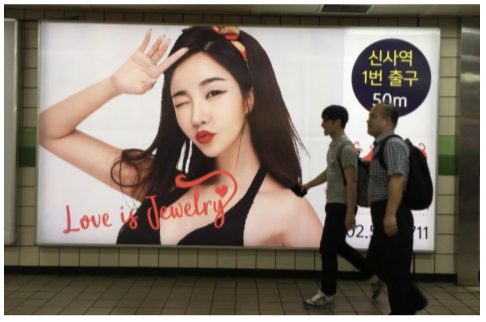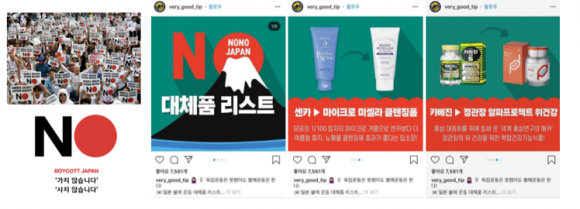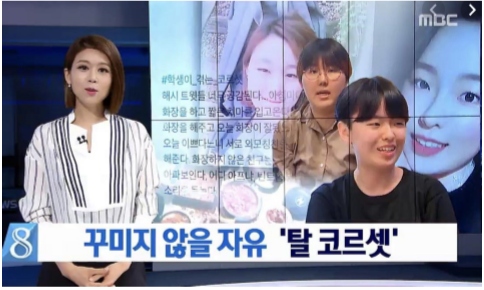
Korea has taken the lead as a global skincare superpower and K-Beauty has become a core innovation driver in the cosmetics industry. Global Insights company Mintel reports that South Korea is now among the top 10 global beauty markets, with facial skincare accounting for 51% of that sum. Driven in part by global infatuation of K-pop, beauty retailers such as Sephora have launched dedicated spaces for their K-beauty collections.
As part of our ongoing Illume Guide featured blog posts, we interviewed our Korean Guide – Leah, to explore latest beauty trends in South Korea.
Hi Leah! Tell us a bit about yourself – where are you from, what do you do and what are you passionate about?
I’m from Pyeongtaek in South Korea. Beauty and fashion have always been my main passions so I’ve been working on my vlog where I share my beauty and travel diary with Korean audiences.
How do you see South Korean society?
Korea is a very fast changing country. Despite being damaged heavily during wartime, Korea recovers quickly and people work hard and efficiently to get things done. Technology is highly developed and embedded in every aspect of our lifestyle.
South Korea has been influenced a lot by American culture. There are many American expats living here and the younger generation grow up learning to speak American English after watching American TV shows.
Korean society used to be traditional in its gender expectations. But now, with influence from the West, feminism is taking its early stage in Korea. Although many women are still obsessed with their looks, there has been a movement called “Escape the Corset” which means escaping from the obsession that women should wear makeup and wear pretty, feminine clothes. Now, more and more women in Korea are seeking freedom to express themselves and create their own beauty standards.
What’s the hot topics people are talking about in Korea?
Last year, South Korea ordered Japanese companies to pay compensation to Koreans over forced wartime labour. Because of that, Japan imposed export controls on materials used for memory chips and display screens, which is vital for South Korean companies like Samsung. It has made South Koreans upset and led to boycotting against Japanese brands.
In beauty, people are trying to find alternatives to their Japanese products on the internet. Especially DHC, which has been removed by retailers for comments. However, DHC TV described Koreans’ boycott of Japanese products as a “childish act”.

Korean people are really into beauty. The widespread K pop culture further influences our beauty mind-set and a lot people want to look like K-pop celebrities. An ideal look for women would be white and bright skin, slim body, small face, V-line (slim jaw line), double eyelids, and a narrow, high nose. Compared to males from other Asian countries, Korean males also pay extra attention to their appearance and will wear BB cream or eyebrow daily. However, since society is still conservative, men would be judged for wearing too much make-up.
Plastic surgery is highly developed here due to the social pressure on appearance as well as the advanced technology. You can easily find plastic surgery ads everywhere in South Korea especially in the underground stations in Seoul. The most common surgeries are double eyelids & nose alterations. Nose fillers and botox for wrinkles and for V-line jaws are quite popular too. Even for teenagers as young as 14, it’s common to go to clinics to get their eyes or nose done for an affordable price. Therefore, South Korea has become a popular destination for international tourists wanting plastic surgery.
Tell us a bit about beauty trends in South Korea
Many beauty Influencers are popping up on social media. They have quickly gained attention from the public and have started to launch their own products. Most people follow influencers on Instagram or YouTube and imitate their look. The three biggest beauty influencers are “Pony”, “Risabae” and “Lamuqe”. Pony who has about 5 million subscribers on YouTube is well known for creating bold looks. She launched her own makeup brand called “PONY EFFECT” and has also been collaborating with different brands such as ETUDE and MEMEBOX.
People have also started to pay more attention to the ingredients of beauty products. ‘Hwahae’ app is a very popular app to check the ingredients of skincare and makeup products. The app shows the ingredients by EWG ratings which has 1-10 grades from low hazard to high hazard. Shoppers are now more aware of the dangers of some ingredients and try to avoid some products that have harmful elements. App users can find out popular products recommended by other users or can review products that they’ve used, and it also shows which products are popular at the moment by different types of skin.
Personal colour testing has been on trend for the past few years in Korea. In general, there are 4 different types which are warm-spring, cool-summer, warm-autumn and cool-winter. Some people find out about their colour type by consulting a personal colour expert, usually the expert would help you find out which colour/ makeup/hair colour/ jewellery suits better. Some experts also offer makeup service by your personal colour analysis. Others might choose to find out the colour by themselves through websites and apps. There are many websites provide personal colour test, a popular colour test app is ‘icolor’.
Can you recommend some popular makeup products in South Korea?
The ‘Dewy look’ is very popular in South Korea and so many products are dedicated to this concept. CLIO and Cledbel are both very popular brands to help girls achieve a dewy look.
How do you see the future of Korean beauty?
Korea is a constantly changing country and there are many beauty innovations happening here, like cushion foundation. I think in the future, there will be more innovation in K beauty. However, with Western brands like Sephora entering the Korean market, K beauty needs to work harder to innovate and stay ahead.






